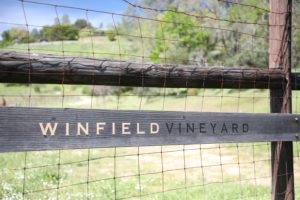
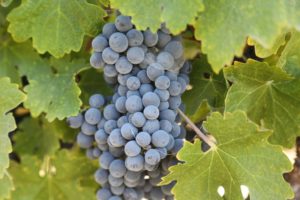
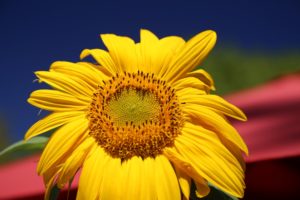 The Grade Cellars is located in Calistoga and was founded with the purchase of 32 acres by husband and wife, Tom Thorton and Brenda Mixson. Both were living in New York City at the time of this purchase (1997) where Tom was a practicing architect as part of a larger firm and Brenda was involved in commercial real estate. Their first trip to Napa was in 1995 where they met a number of winemakers and others in the business.
The Grade Cellars is located in Calistoga and was founded with the purchase of 32 acres by husband and wife, Tom Thorton and Brenda Mixson. Both were living in New York City at the time of this purchase (1997) where Tom was a practicing architect as part of a larger firm and Brenda was involved in commercial real estate. Their first trip to Napa was in 1995 where they met a number of winemakers and others in the business.
Initially they began looking at what would be a good investment; they did not live in the valley and had no intent on making wine. However, they made a concerted effort to look for property in both Sonoma and Napa; in hindsight Tom reflects how fortunate they were to have purchased this particular vineyard location. Winemakers, vineyard management practices, vineyard managers and a number of related facets to the business are in a constant state of change; however, your land is the one constant in all this.
Tom told us, that as an architect “you are always starting your next project” – he equates his professional work with their vineyard; he certainly brought a keen sense of adventure with him when developing this property to its full potential. As an architect you take a number of steps during a project and eventually the building is completed. Not so with the wine industry, they initially (somewhat jokingly) thought once their vineyard was replanted that was going to be the end of their work.
However, as it happens often, Napa has a special effect on new landowners over time. Tom and Brenda initially planned to spend some time in the valley for vacation; during their early years in the valley they were flying in many times to help with vineyard decisions. Then it became a retirement destination, so they moved here full time and soon invested more and more into managing their vineyard; all of their grapes were being sold to some well-regarded wineries. But ultimately, they started making wine commercially; their first vintage was from 2004. Their founding winemaker was Rudy Zuidema. Today they continue to sell their grapes to other wineries and produce merely around 500 cases for The Grade Cellars. Plans call for increasing production in the coming years.
Tom borrows a term from his architectural toolbox and calls their vineyard location the “mezzanine” of the valley. Winfield Vineyard is not quite valley floor and not quite hillside either. Rather it sits just above the valley upon alluvial fan soils that have eroded down from Mt. St. Helena and the Palisades (nearby rocky ridges) over the centuries.
Despite only 12 acres of vines planted on the 32 acre property, the vineyard has a number of different soil types. During the original soil pit testing, each pit produced a different soil type. The vineyard is separated into 7 distinctive blocks – almost like 7 unique mini vineyards. They source from the same block for their Cabernet Sauvignon each year. They strongly value these vineyard variations and soil differences; these differing characteristics provides them the additional “tools” and contributes unique expressions in the wine from each block. This ‘spice rack’ is especially important during blending sessions.
The property used to be an old almond orchard, was planted to Gamay Beaujolais at one point and when they acquired it, was planted to old Sauvignon Blanc. For the first few years after their purchase, they sold these grapes and then in 2000 replanted the vineyard entirely to several clones of Cabernet Sauvignon.
In addition, the micro-climates on such a small property are rather surprising. One corner of the vineyard butts up against the hillside, is more protected and tends to be warmer, while another corner of the vineyard sees cooling breezes coming out of the nearby Jericho Canyon; Brenda describes walking from one part of the vineyard to another on a summer evening as dramatic as walking from warm air into cold water with the temperature varying significantly.
Old Lawley Toll Road
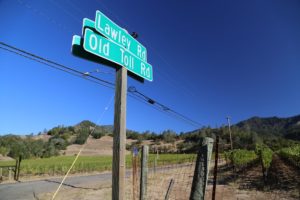

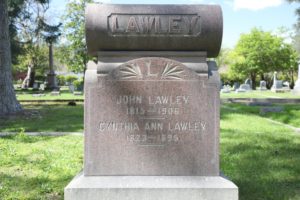 The name “Grade Cellars” is an appropriate one based on the location of their vineyard at the entrance to Lawley Toll Road in the northern part of the valley. The famed writer Robert Louis Stevenson discovered this part of the valley because he ran out of money on his honeymoon. Active quicksilver mines were located in the hills above the valley floor, and he spent some time at these mines in what is now the abandoned town of Silverado. Mr. Stevenson describes their vineyard location in his book, The Silverado Squatters; this was the initial grade leading up the old Stagecoach Road up the side of Mt. St. Helena. And at one point this was a toll road.
The name “Grade Cellars” is an appropriate one based on the location of their vineyard at the entrance to Lawley Toll Road in the northern part of the valley. The famed writer Robert Louis Stevenson discovered this part of the valley because he ran out of money on his honeymoon. Active quicksilver mines were located in the hills above the valley floor, and he spent some time at these mines in what is now the abandoned town of Silverado. Mr. Stevenson describes their vineyard location in his book, The Silverado Squatters; this was the initial grade leading up the old Stagecoach Road up the side of Mt. St. Helena. And at one point this was a toll road.
This approximately 4-mile long road begins near Calistoga at the junction of Silverado Trail (which was named by the county of Napa in 1921) on the valley floor and winds its way past several vineyards and wineries on its lower reaches located just past The Grade’s Winfield Vineyard, including Maldonado Vineyard, Amici Cellars and Jericho Canyon. The road is named after John Lawley, an early Napa County pioneer, born in Alabama who came to California in 1852 to work in gold mines. He initially moved to Knights Valley in neighboring Sonoma County to farm, and by 1854 he was living in Napa and in the grain business. To grow his operations, he built what was called the Banner Warehouse near the corner of 5th Street and Main Street in the city of Napa that same year (an intersection that later was home to Migliavacca and Uncle Sam wineries).
From 1866 through 1868, along with the help of two partners, built Lawley Toll Road over the steep slopes of St. Helena and was the primary access road to neighboring Lake County including to a number of resorts and to Middletown. Incidentally an old trail (Old Bull Trail) built in the 1850s previously connected northern Napa Valley with Lake County (which incidentally, until 1861, used to be a part of Napa County). Both Lawley and later his children collected tolls from this road. In 1922 it was purchased by Napa and Lake counties and run as a toll road for two more years to pay off the purchase amount and then was converted to a public access road.
John was involved in numerous early Napa Valley enterprises or lent his assistance to numerous others. In 1872 Lawley and partners discovered mines on Mt. St. Helena that would eventually be home to a mining community called Silverado, where author Robert Louis Stevenson spent part of his honeymoon. At one point Lawley was owner of the Phoenix Quicksilver Mine (cinnabar ore) in the hills on the east side of Howell Mountain in Pope Valley, the Napa County Coroner and constructed what is now Monticello Road from Lake Berryessa to the city of Napa. From the 1860s through the early 20th century, Napa County was one of the most prominent quicksilver regions in the state. John died in 1906 at age 91.
Winemaker, Thomas Rivers Brown
Thomas is one of the busiest wine makers in the Napa Valley. Several producers have showed us lists of all the Napa brands that he consults for and or provides direct winemaking services; this is an extensive list. Originally from Sumter, South Carolina, Thomas developed an interest in wine while attending the University of Virginia where his major was not wine related (he studied English and Economics).

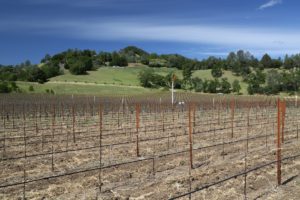 He moved to Napa Valley in 1996 and took a job at All Seasons in Calistoga (known for their California cuisine, wine selection and years in business; unfortunately, All Seasons Bistro permanently closed in 2020). While there, Thomas met winemaker Ehren Jordan who was working for Larry Turley at the time of Turley Wine Cellars. Thomas took a job with Ehren in the cellar at Turley in 1997 – spent several years there before beginning his own career and starting to consult for various clients (some of which were clients that Ehren was already working with).
He moved to Napa Valley in 1996 and took a job at All Seasons in Calistoga (known for their California cuisine, wine selection and years in business; unfortunately, All Seasons Bistro permanently closed in 2020). While there, Thomas met winemaker Ehren Jordan who was working for Larry Turley at the time of Turley Wine Cellars. Thomas took a job with Ehren in the cellar at Turley in 1997 – spent several years there before beginning his own career and starting to consult for various clients (some of which were clients that Ehren was already working with).
And within only 10 years of making wine in the Napa Valley Thomas received two 100-point scores from Robert Parker – regardless of what your perception is of scores, creating several wines within a short period of time that receive 100 points from Parker was a watershed moment in Thomas’s consulting career.
Today Thomas is highly sought after for his winemaking services, experience and access to premium area vineyards. And while he was once the student, over the years he has become the teacher. We have met with a number of winemakers who worked under Thomas – and consider him one of their mentors. These are winemakers who have gone on to establish their own brands or consult for other Napa Valley based brands.
Select Wines
They produce several proprietary named Cabernet Sauvignon wines annually, along with one Sauvignon Blanc. Their 100% Estate Cabernet Sauvignon is made from multiple clones and their Sauvignon Blanc is sourced from a vineyard nearly across the street from their own vineyard.
Like with a number of other small producers we have met with, The Grade Cellars did not release their 2011 vintage. This was a challenging year in Napa Valley due to unusually cold and rainy conditions at inopportune times during the growing season; it was decided this vintage did not meet their standard for quality. And no estate wines were produced in 2020 due to the terrible smoke taint from the Glass Fire. We spent a week in Calistoga behind evacuation lines assisting with fire fighting efforts during including delivering water to wineries and to firefighters. This was the worst smoke we have ever experienced in our life; several days during the fire, the skies were so dark during the middle of the day that street lights were on.
Sauvignon Blanc
The 2012 Grade Cellars SEA-FOG Sauvignon Blanc is named for a chapter title in Robert Louis Stevenson’s book The Silverado Squatters. However, this name could also apply to the cooling influences originating from “sea fog” that often passes through this part of the valley in the evenings from the nearby Chalk Hill Gap, a low point in the Mayacamas mountains that allows a coastal influence to often cool this part of the valley significantly during the summer evenings. Sauvignon Blanc is one of Brenda’s favorite varieties and after a few years of making only a Cabernet Sauvignon they realized they needed a companion white to add to their portfolio. They conducted initial research on this variety by tasting through some of the finest Sauvignon Blanc wines in Napa including Lail Vineyards as well abroad including the Bordeaux powerhouse, Chateau d’Yquem.

 They found a style of this variety that they like, one that is balanced, with bright acidity and as luck would have it their vineyard neighbors grow this variety. The 2012 Grade Cellars SEA-FOG Sauvignon Blanc has beautiful aromatics; the wine needs time to breath but when it does, it reveals layered juicy fruit including melon, honeysuckle, white peach and a red apple component. The mouth feel is light on the palate with clean varietal flavors with a minerally driven finish.
They found a style of this variety that they like, one that is balanced, with bright acidity and as luck would have it their vineyard neighbors grow this variety. The 2012 Grade Cellars SEA-FOG Sauvignon Blanc has beautiful aromatics; the wine needs time to breath but when it does, it reveals layered juicy fruit including melon, honeysuckle, white peach and a red apple component. The mouth feel is light on the palate with clean varietal flavors with a minerally driven finish.
Cabernet Sauvignon
The 2010 Grade Cellars single vineyard, single clone Cabernet Sauvignon shows deep ruby in the glass; the nose reveals bright and lively fruit aromatics. The bouquet is more about the fruit than the barrel influence, although traces of mocha and vanilla linger slightly in the deepest reaches of the aromas. And there are additional scents of blackberry and dark cherry. The palate is clean and bright with a dusty component mid palate. The tannins are certainly there but they are a part of the wine, well integrated, rather than being a distraction on the finish.
And we tried their inaugural production, the 2004 The Grade Cellars Cabernet Sauvignon some 19 years post vintage. This rare bottling has held up remarkably well and still showed a noticeable freshness, liveliness and a long tasting textural grip. Those who say Napa wines do not age well would not be able to say that about this particular wine.
—
NOTE: this profile has been identified as needing a *major update* including tasting notes for current release wines. And Winfield Vineyard is currently for sale as is potentially The Grade Cellars wine brand.
Tastings are by referral and or for serious wine enthusiasts or collectors and weather permitting are held on an overlook above their vineyards with excellent views of the northern part of the valley. An added feature is their 1971 vintage airstream trailer, which is in impeccable condition.
For a number of years, The Grade Cellars held tastings in a beautifully renovated tasting salon in downtown Calistoga (by appointment) within a house originally built in 1905. However, as of summer 2020, this tasting room is now permanently closed and all signage for The Grade Cellars has been removed from the property.
For more information, to purchase wines including library bottlings, to join their mailing list or wine club visit: www.thegradecellars.com
Former tasting room, Calistoga (permanently closed)
We watch a lot of videos about Napa wineries – this is one of the best we have seen:







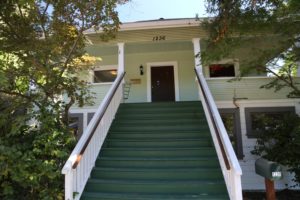
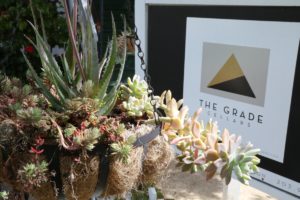
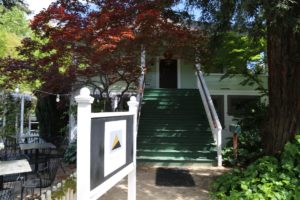
Very interesting story !
Our store, Long Meadow Wine & Liquors, in Hagerstown, MD just purchased 6 bottles of the 2016 Winfield Vineyard Cabernet Sauvignon, and it is outstanding ! Do you have any tasting notes to help sell it? We also have a couple of bottles of the 2005, 2009, 2013, and 2014. These wines are awesome, but we think the 2016 is the best.
Thanks for your help.
Kirk
Kirk – thanks for stopping by. I will drop you an email now.